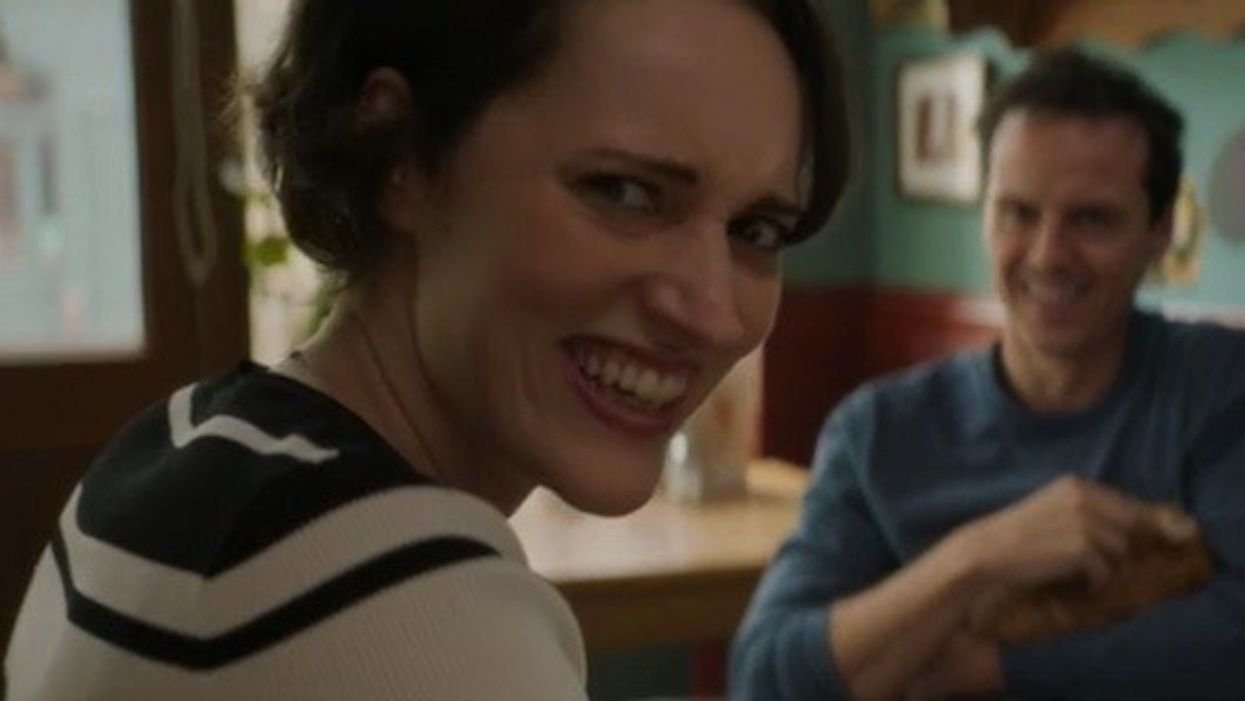How 10 Perfect Minutes of Rule Breaking Transformed 'Fleabag'
Breaking the rules you've created for your show is hard to pull off, so how did Fleabag break its rules perfectly?

The second season of Fleabagmasterfully crafts the perfect ending to a phenomenal show by simply changing. Not changing in the way that most series do when half the original characters are gone or lose any sense of cleverness that they had in the first season. Instead, Fleabag’s change was purposeful and meaningful for one character only—Fleabag herself (Phoebe Waller-Bridge).
The second season follows Fleabag as she begins to fall in love with the Hot Priest (Andrew Scott), slowly breaking the rules of the show to show Fleabag's character growth. The melancholy beauty of just 10 minutes in the show that happens at the exact center of season two shows us how taking away trusted devices can make a show even more powerful.
Insider breaks down how taking away the fourth wall, changing the editing style, and changing the theme music can put an audience deeper into the mind and perspective of the main character. Check out their full video below:
Breaking the Fourth Wall
Fleabag is notorious for interacting with the audience, which immediately sets the show apart from everything else on TV. Almost every conversation in the show is interrupted by this device. The audience becomes so used to it that we feel like we are a part of the show, a friend to Fleabag.
But as the show goes on, we start to understand why this fourth wall break exists. It is through her closeness with us that Fleabag remains distant from people in her world. She remains partially absent and protected from her conversations with other characters because she knows we are there to listen without response.
In these 10 minutes, the Hot Priest cuts through Fleabag’s defense, asking her where she is going when she cuts away to look at us. He begins to notice her withdrawal, and it becomes harder and harder for her to keep us a secret.
The exchange where Fleabag is talking about the Hot Priest’s neck with us is a perfect example of this change. She accidentally tells the camera her response to his question, and tells the Priest, “His beautiful neck,” leaving him and Fleabag confused.
This is the natural progression of their relationship on full display, moving from distant to close to uncomfortably close, challenging Fleabag to shed her defense.
Change in Editing Style
Fleabag has a chaotic editing style. The dinner scene at the top of season two, for example, displays the editing style with 16 cuts, 11 of them with different camera positions, in under 30 seconds.
In contrast, a conversation that Fleabag and the Hot Priest have in the 10-minute sequence has standard coverage, only having three different shot types and six cuts in under 30 seconds.
The editing style also changes. Instead of using jump cuts, hard audio cuts, cutting across the 180-degree line, and scene transitions that cut characters off mid-word, the moments between Fleabag and the Priest are edited to be simple and fluid.
The smoother audio lead-in and the traditional coverage create an intimate moment that is rare in Fleabag’s life.

Music
The last clue that shows us how these 10 minutes operate differently from the rest of the show is the theme music that introduces the title card. A Catholic choir singing frequently overlays Fleabag’s thoughts about the Hot Priest and her desire to violate a core Catholic principle.
The theme music is quite ironic as Fleabag turns her feelings towards the Hot Priest into an inside joke with the audience. But then, the music changes. The opening to episode four is layered with music that has more romance in it rather than the doom and gloom of the Catholic choir.
When Fleabag begins to care more about the Hot Priest than us, everything in the show shifts. While the humor is still there, the tone has shifted to highlight the romance budding within Fleabag, something that the audience hasn’t truly seen from her before.

The sequence stands out amongst the rest of Fleabag because it unapologetically breaks the rules of the show. The point of changing how the show works is to show Fleabag’s growth as a person, moving away from grief-fueled relationships with the audience and the filmmaking language that constitutes that relationship.
That is why that final shot of Fleabag refusing to let us follow behind her was the perfect end to the series. She doesn’t need us anymore, and, in turn, we don’t need to be there for her. This ending wouldn’t have been as powerful if it weren’t for the Hot Priest breaking through Fleabag’s guard and changing the filmmaking rules of the show just for a few minutes.
Let us know in the comments if another show breaks the filmmaking rules, and why it stuck with you!
Source: Insider











